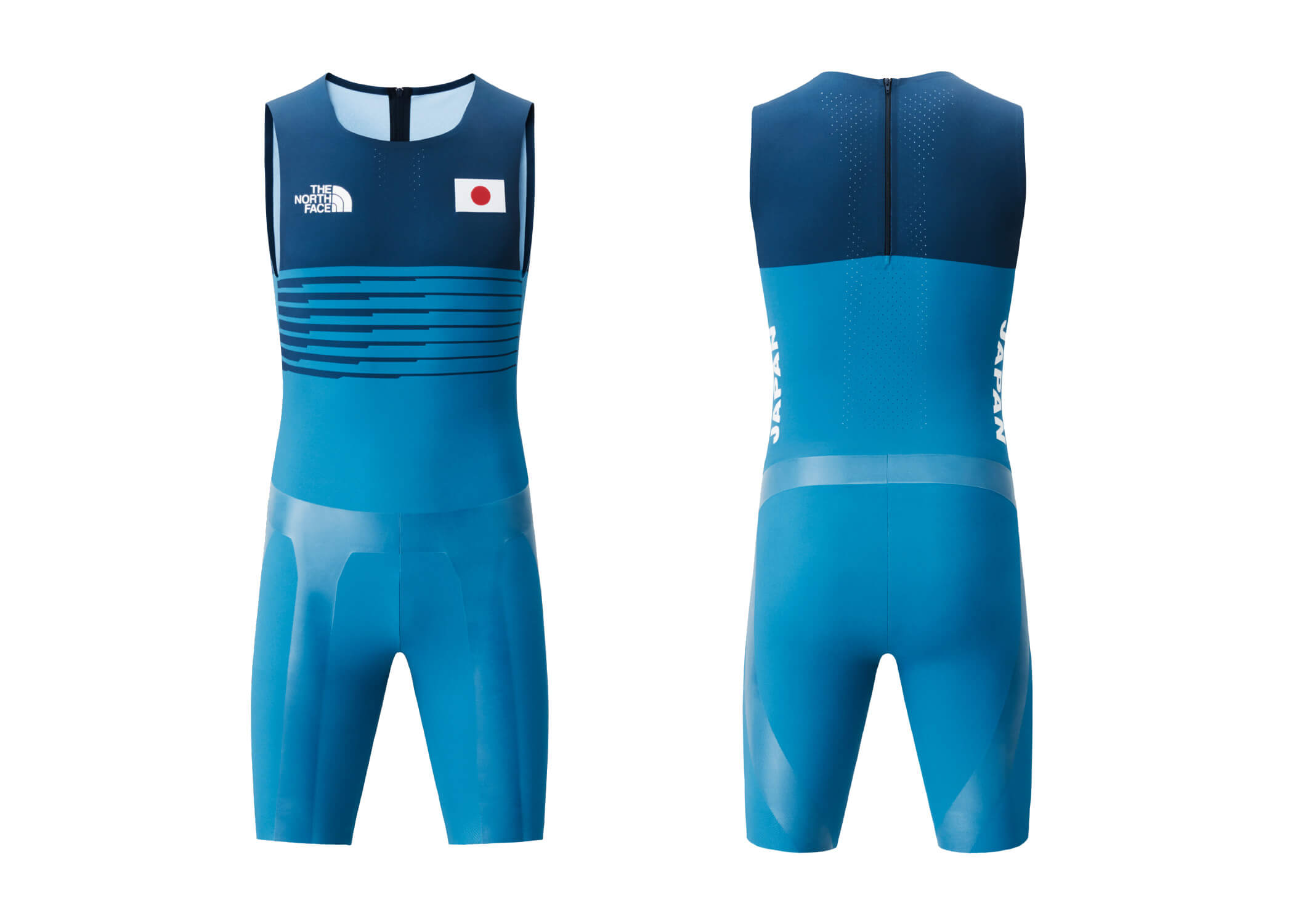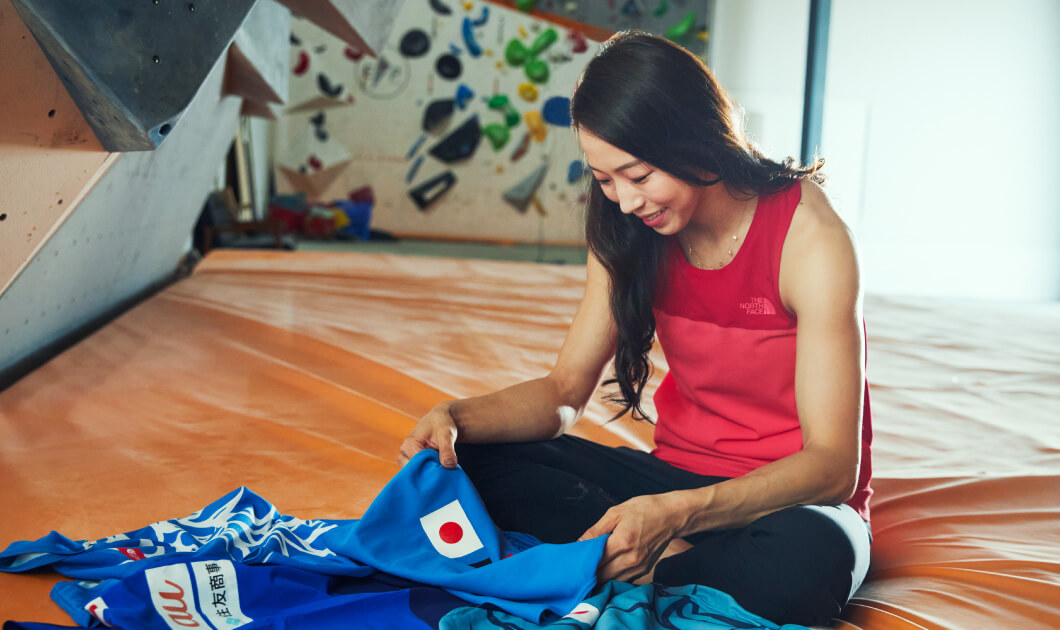
The Best Climbing Kit Ever, Created on an Unprecedented Scale
As the official supplier for the Japan Mountaineering and Sport Climbing Association, The North Face—which supports world-renowned climbers such as Yuji Hirayama, Akiyo Noguchi, and Tomoa Narasaki—first began providing the official uniform for the Japanese national sport climbing team in 2005. Since then, “Made in Japan” uniforms have brought out the utmost performances from the top climbers internationally. After the biggest news of the sports climbing world was announced in 2016, a joint project of an unprecedented scale of The North Face teams in Japan and US developing sports climbing uniforms launched. The Japan Mountaineering and Sport Climbing Association alongside certified athletes participated in the project. With the Goldwin Tech Lab in Toyama as the development base, advanced technology such as 3D scanners to predict and to analyze the movement of the athletes as they climb were utilized to conduct a series of scientific verification. In addition, frequent feedback sessions with the athletes were conducted. Through numerous data analyses and reviewing minute details, the team was able to realize new levels of highly detailed customization for each athlete. Combining the collective will of the top climbers globally and The North Face technology, the best climbing kit ever had been completed.
[ Project Slogans ]
1. Climbing wear that maximizes performance—physically,
mentally, and performatively conveying the actuality that “I am
the best climber.”
2. Climbing wear that gives the advantage in the competition.
3. Climbing wear that embodies the competitive nature of the
sport and the pride and joy of representing one’s country.
At the start of the project, these three slogans were established. Collectively, they strive for “climbing wear that improves the athlete’s performance to the extent that there is an overwhelming advantage over the other countries.”
Pillars of Function Derived from Technology:
motion, light
strong, cooling
For this version of the climbing kit, two types, one of which is a high-dimensional update of the conventional “lead climbing/bouldering” (hereinafter “lead/bouldering”) wear and another is a revolutionary body suit for “speed climbing” (AKA “speed”) which minimizes speed loss and supports acceleration during competition, have been developed. Taking into consideration the elements that the climbers seek in kits, the competitive nature of climbing, and the conditions at the competitions, three pillars of functionality were established. “Motion,” “light strong,” and “cooling”—with these pillars in mind, characteristics of each disciplines and the athletes’ movements and muscular activity were thoroughly analyzed to calculate the average postures of the movements during competitions. These postures, deemed neutral positions, were then incorporated into the pattern design.
Two Types of Climbing Wear,
Made According to the
Characteristics of Each Discipline
In developing the speed suit, the vertical movement of the athletes climbing a wall was analyzed. Based on those results, a high support print was applied from the waist area to the thighs to yield accurate leg raising, thereby reducing speed loss and maximizing speed. Furthermore, all athletes were 3D scanned at least once up to three times, so as to obtain accurate measurements, for highly individualized kits for premeditated movements. The lead/bouldering wear, on the other hand, pursued mobility and lightness to accommodate various movements required to solve a range of problems, all while fitting the body as if it is not in the wear. The goal of the pattern design was to eliminate all stress and tension that may arise from the wear and to maintain the athlete’s concentration.

Assisting in Accelerating—From Zero to Plus
[Technology]
-Lasered openings are made to improve ventilation in the chest
area and the back where sweat tends to collect.
-According to the movement of the hip joint, tension-yielding
print is applied to support quick leg-lifting.
-A 4-way stretch tricot knit that encourages dynamic movements
is used.

Eliminating All Movement-Hindering Elements—Turning a Minus into a Zero
[Technology]
-Lasered openings are made to improve ventilation in the chest
area and the back where sweat tends to collect.
-Lasered ventilations, which open and close in response to
bodily movements, are placed on the upper body parts to diffuse
heat.
-Ultra-lightweight material that does not hinder movement and
encourages stretchability is applied to the abdomen. This
material is also less prone to getting caught in the holds.
-The waist area utilizes a 4-way stretch tricot knit to
encourage wide leg strides and movement around the waist.
-Ultra-lightweight fabric material is used to give
stretchability to the legs.

With Respect for Each Climber’s Style,
In
Celebration of Each National Flag and Its Identity
This is the first climbing kit developed jointly by The North Face in Japan and the United States, to be worn by the national representatives of Japan, the United States, South Korea, and Austria. A total of 15 types of looks for both men and women for speed and lead/bouldering were produced. Each athlete was given the option to choose their look according to their style and preferences. The inspiration for the design of the national flags, each placed on the chest, was derived from historic Swiss design—where the brand has its roots. Since the conception of the half-dome The North Face logo, the design philosophy—with simplicity and boldness as its foundation—has been prevalent in the brand identity. Based on such design rules, the uniform design has placed importance on iconic minimalism and basic design, while simultaneously fulfilling the technical needs of the athletes and celebrating the uniqueness of each national flag.











